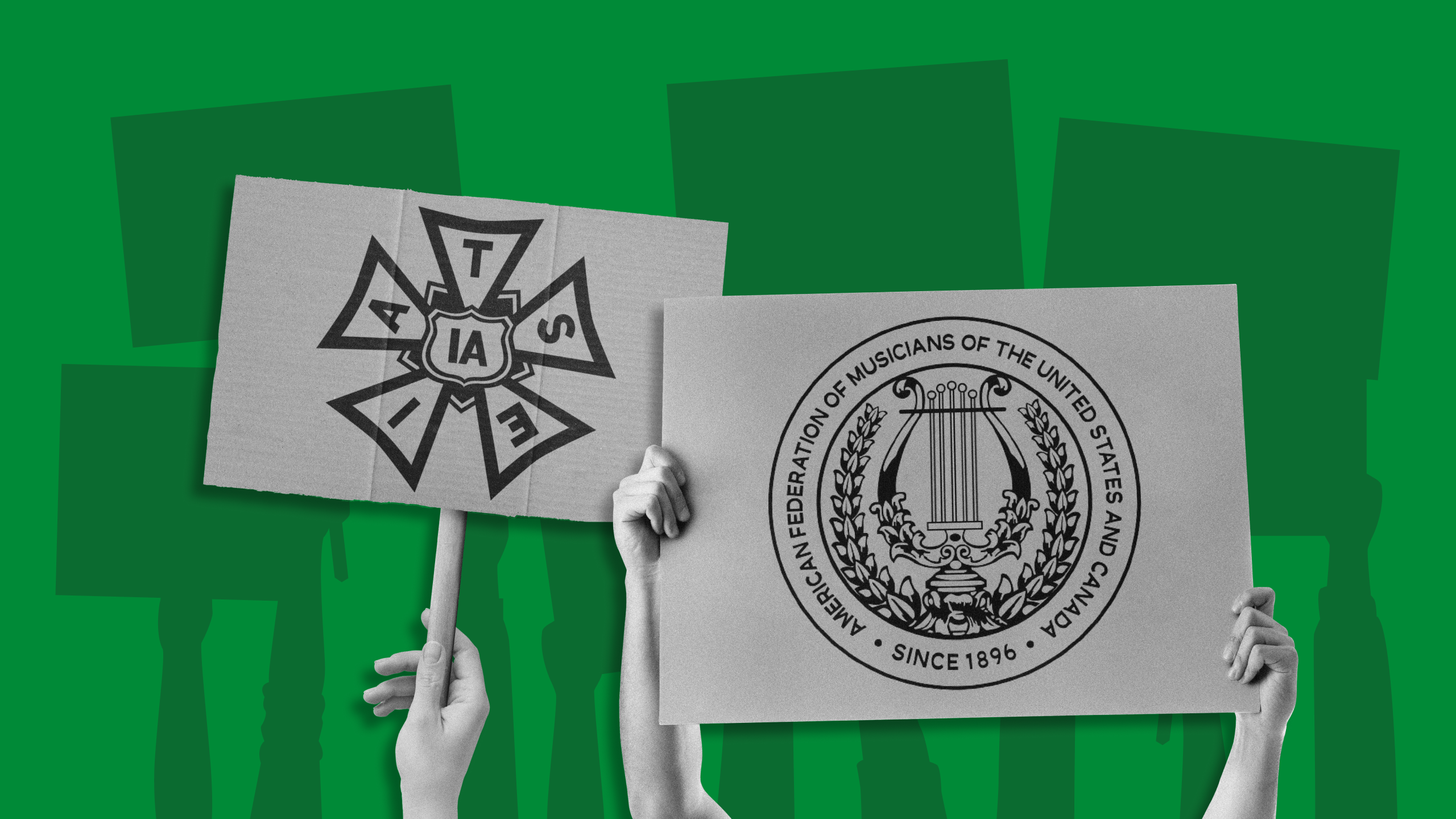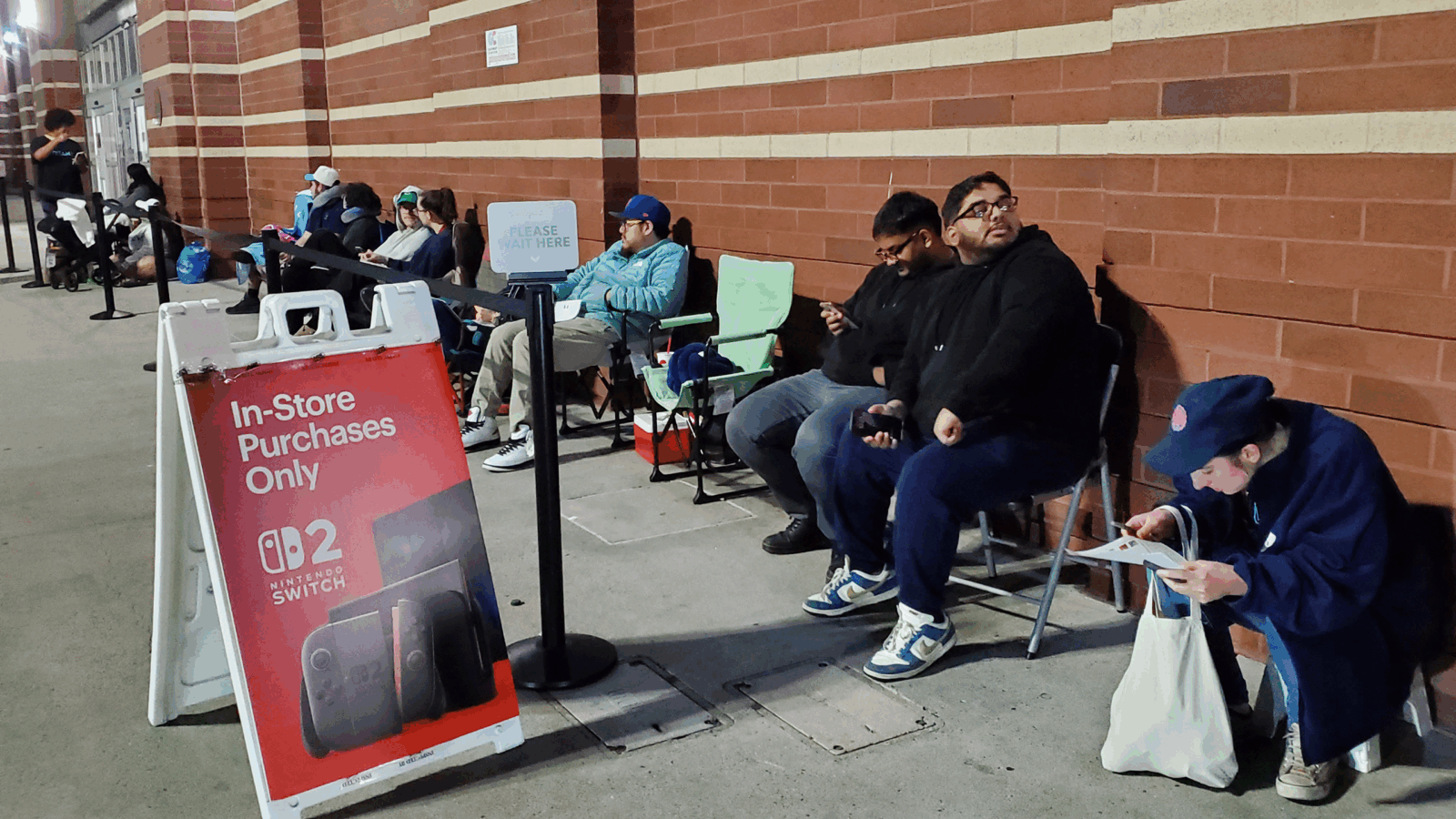Will Hollywood’s Labor Peace Be Short-Lived?
This year, a slew of unions representing Hollywood’s less heralded below-the-line workers have their turn at the negotiating table

Sign up for smart news, insights, and analysis on the biggest financial stories of the day.
For the first time since 1960, Hollywood faced simultaneous strikes last year from two of its top labor unions — the screenwriters’ and the actors’ guilds — resulting in a combined work stoppage that lasted nearly 200 days, effectively shutting the entire industry down.
By November, agreements were reached, and, as they say in show business, the show must go on. But maybe not for long.
This year, a slew of unions representing less heralded below-the-line workers have their turn at the negotiating table. And while their members lack the star power of last year’s A-list picketers, they’re seeking protections against many of the same threats, such as shifting workplace standards amid the transition to streaming, wage stagnation amid rapid inflation, and the ever-looming specter of artificial intelligence.
As the legacy media companies in Los Angeles and their Silicon Valley competitors struggle to find their footing in the modern attention economy, more labor tension is already underway.
Money Never Sleeps
Earlier this month, the Alliance of Motion Picture and Television Producers (AMPTP), the trade association negotiating on behalf of Hollywood’s major studios, began contract talks with the American Federation of Musicians (AFM). Talks with the group that represents some 70,000 recording artists and musicians marks the first of two major Hollywood labor negotiations set to begin this year. The second will begin in March, with the International Alliance of Theatrical Stage Employees (IATSE) — a collection of below-the-line artists, technicians, and tradespersons in production roles like editing, set design, and lighting.
The big question is whether the unions or the studios have any appetite for another work stoppage. As the WGA and SAG strikes proved, trickle-down effects are felt particularly hard in a company town:
- The economic toll from last year’s dual strikes was as much as $6 billion, Kevin Klowden, the chief global strategist of the Milken Institute, told Variety.
- Meanwhile, the Motion Picture and Television Fund, which provides financial support to primarily below-the-line crew, gave out roughly $3 million in relief grants, CEO Bob Beitcher told Variety. Further, over 4,500 below-the-line crew members applied for roughly $68 million in “hardship withdrawals” from their individual retirement accounts.
The economic impacts are truly profound, especially for Hollywood’s working class. Many members of both unions likely can’t afford another long layoff, potentially giving the AMPTP a negotiating advantage.
But the studios aren’t necessarily operating from a position of strength, either. While executives quietly enjoyed the cost-cutting silver lining of last year’s shutdown that effectively helped shore up balance sheets following a yearslong and costly Streaming Wars production blitzkrieg, declining ratings and shrinking ad revenue continue to eat away at the once-lucrative linear and cable TV business.
After missing the fall season, popular and reliable scripted programming is just now returning to primetime airwaves, and networks likely want to keep it that way. After all, America can only fall for the gimmicky Golden Bachelor, produced by mostly non-union staff, so many times. In another instance of “nothing better to air” last resorts, Disney in January moved some of ESPN’s Wednesday night NBA games onto its ABC mothership — marking the league’s first-ever weeknight game on a broadcast network (not including Christmas) since at least 1991, according to reporting from the Sports Business Journal.
Face the Music: So just what, exactly, are musicians hoping to gain in their ongoing contract talks? In addition to typical cost-of-living increases and protections against AI — standard union contract fare in 2024 — a key sticking point, according to Michael Maizner, an entertainment labor lawyer and founder of Maizner & Associates, is “re-use,” or how artists are compensated when a piece of music they produced is used again in a new piece or format of media.
Fortifying re-use protections, Maizner says, is expected to be paramount in the upcoming negotiations, which will be led by the union’s new president Tino Gagliardi — elected last summer and the first change in the AFM’s top leadership position in 13 years.
Gagliardi likely has his work cut out for him, and establishing strong and favorable terms today could help the union maintain standards moving forward — something it’s struggled with in recent years. “[The AFM is] woefully understaffed,” Maizner told The Daily Upside, “It’s hard for them to enforce their agreement.”
IATSE Yahtzee: The technical workers in IATSE, on the other hand, are likely focusing on securing health and pension plans, codifying reasonable rest periods, and fortifying on-set protections — especially in the wake of cinematographer Halyna Hutchins’ death on the set of the film Rust in late 2021, the last year IATSE negotiated a new contract.
CGI-Spy Another Union: While the IATSE and AMF negotiations were regularly scheduled programming this year, perhaps more pressing for the industry in the next 11 months is a wave of unionization efforts from previously non-union workforces.
Studios leaned hard on third-party visual effects workers amid the dual production boom of Peak TV and CGI-heavy blockbusters. Much of that work is contracted out to independent studios in a somewhat arcane economy in which visual effects companies bid for projects, with the low bid sometimes, but not always, winning out. But while budgets are locked in, studios have become increasingly known to change the terms of their projects on the fly, demanding tweaks and do-overs — sometimes pushing studio houses to operate in unprofitable ways to complete the project and meet client demands.
The issue came to a particular head a year ago when Disney’s Marvel Studios released Ant-Man and the Wasp: Quantumania, which was instantly dinged by critics and fans alike for its apparently unfinished visual effects — and the suspicions, as it turned out, were correct.
Multiple employees who worked on the film told Vulture that severe understaffing and unrealistic deadlines resulted in “a lot of unpaid overtime” and “shortcuts” to get the film out on time, ready or not. The headlines only fueled a burbling effort to unionize across the sub-industry, with IATSE leading the way to fold in both third-party, or “vendor-side” visual-effects workers, as well as in-house, or “client-side,” personnel:
- In a survey conducted last spring by IATSE, only 12% of client-side workers have a health insurance plan that they can take from job to job, while 45% get healthcare only for the duration of their project; 43% have no health insurance.
- Meanwhile, 25% of vendor-side visual-effects workers reported having access to portable health plans, while 47% said they had employer-contributing retirement plans.
In a subsequent news conference held by IATSE, veteran visual-effects worker Maggie Kraisamutr outlined the toll of the tough working conditions and lack of standards in the craft: “When I made the transition (from animation) into visual effects, I had zero benefits offered to me… Most visual effects workers I know can barely survive five years in the industry.”
By September 2023, the in-house workers at Marvel Studios voted unanimously to unionize with IATSE, marking the first time a unit of solely visual-effects workers unionized with IATSE.
Real World: Hollywood’s other looming labor movement comes from a group far removed from CGI-created worlds: reality TV stars. Last summer, former Real Housewives of New York cast member Bethenny Frankel began a public campaign for reality TV stars to unionize, citing mistreatment and poor working environments. Jeremy Hartwell, a contestant on the Netflix reality show Love is Blind, sued the streaming giant last year, citing “inhumane working conditions.” He has also since co-founded the Unscripted Cast Advocacy Network, which provides mental and legal support to current, former, and future reality TV stars — possibly presaging a broader labor push.
Reality crews, too, remain non-unionized — which, to Hollywood, is more or less exactly the point. In 2001, when the writers’ union threatened to go on strike, Hollywood had an ace up its sleeve: the growing popularity of non-scripted, non-union reality shows blowing up across the airwaves, with Survivor in particular proving that audiences would devour unscripted content with the same fervor as their favorite shows. Twenty years later, Hollywood may need to create a new format of non-union content, which explains all the hand-wringing over AI.











